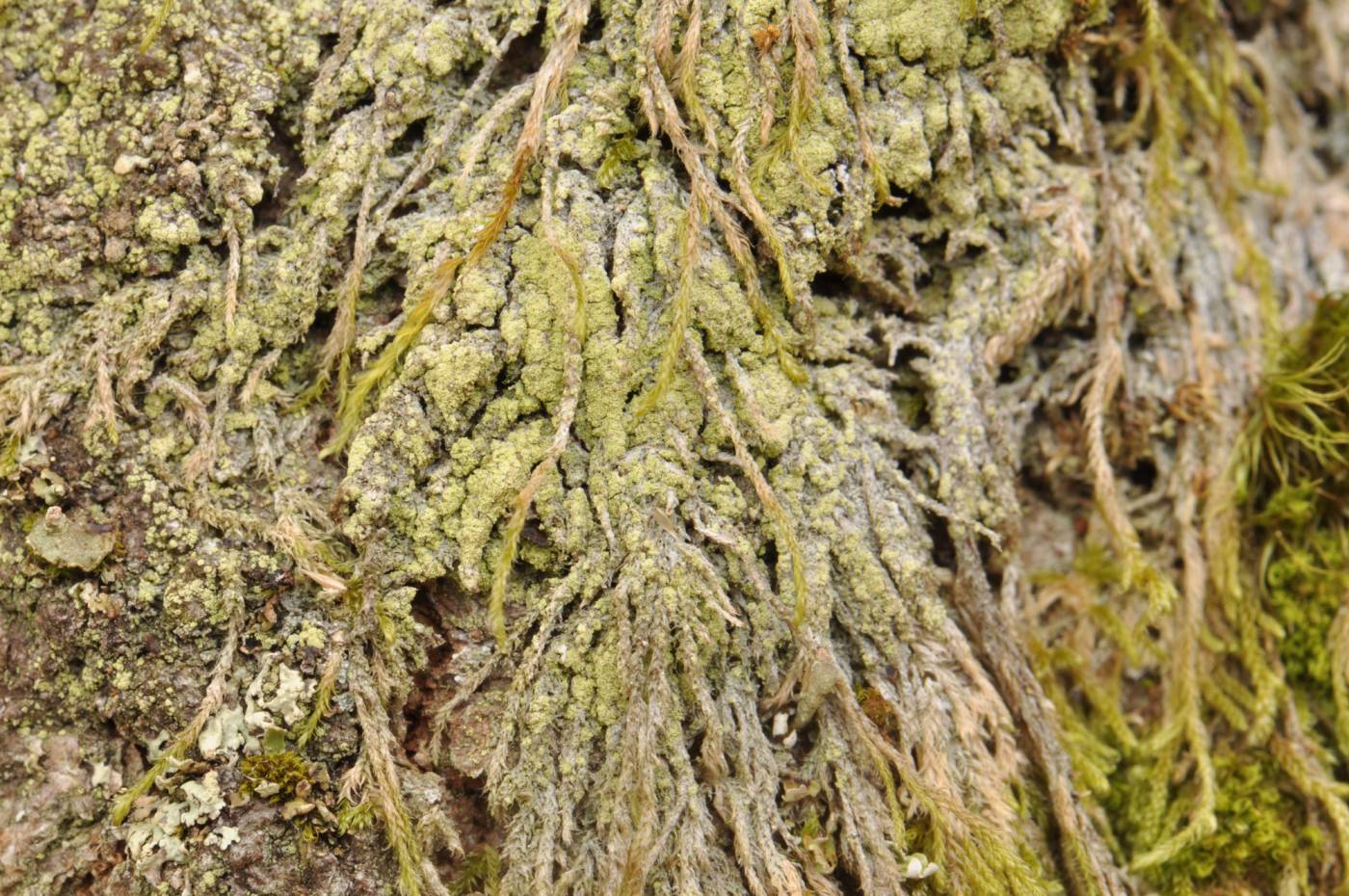This acidophilous forest species usually occurs as a sterile crust. It grows mainly in valleys of headwaters and in well-preserved mountain forests dominated by beech, where it prefers mossy tree bases. It requires a humid and stable microclimate. Based on the frequency of occurrence and preferences for several forest types in the Šumava Mountains, it has been listed among the regionally more frequent lichens indicating natural beech forests (Vondrák & Kubásek 2019). However, it is relatively common also on Sorbus aucuparia in mountain spruce forests (Malíček et al. 2019). Exceptionally, it was reported from shaded moss-covered stones in scree forests. Apart from Šumava, this lichen is relatively rare in the Czech Republic. It has recently been found in most mountain ranges, including the central Brdy Hills.
Literature: Vondrák J. & Kubásek J. (2019): Epiphytic and epixylic lichens in forests of the Šumava mountains in the Czech Republic; abundance and frequency assessments. – Biologia 74: 405–418. Malíček J., Palice Z., Vondrák J., Kostovčík M., Lenzová V. & Hofmeister J. (2019): Lichens in old-growth and managed mountain spruce forests in the Czech Republic: assessment of biodiversity, functional traits and bioindicators. – Biodiversity and Conservation 28: 3497–3528.
taxonomic classification:Ascomycota → Lecanoromycetes → Lecanorales → Ramalinaceae → Biatora
Red List (Liška & Palice 2010):VU – vulnerable
Occurrence in the Czech Republic
All records: 175, confirmed 153. One click on a selected square displays particular record(s), including their source(s).
